Photo
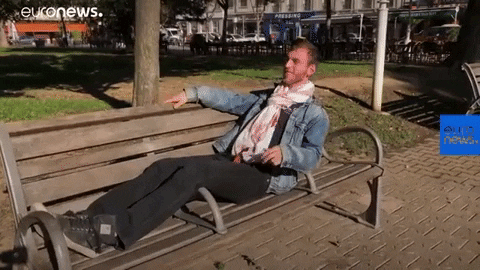

Unit 7: Homeless
For unit 7, I have decided that my keyword for this section would be chronic homelessness. Homeless is defined by Oxford as a person without a home, and therefore typically living on the streets. However, Chronic Homelessness is defined as people who have experienced homelessness for at least a year — or repeatedly — while struggling with a disabling condition such as a serious mental illness, substance use disorder, or physical disability. People tend to become stagnant in this category of poverty due to circumstances such as debt, unemployment, substance abuse, etc. One thing that ties all those issues together though, however, is a lack of humane support. Author of the article “Neo-liberal Biopolitics and the Invention of the Chronic Illness”, Craig Willse provides further context to chronic homelessness. He states, “Unlike individuals or families for whom living without shelter is a temporary episode, the chronically homeless are understood to exhibit long-term patterns of cycling in and out of shelters, hospitals, and jails, interspersed with periods of living unhoused or ‘on the streets’,” (Willse). This concept is important to understand because this is quite the epidemic that typically does not get much serious attention. Most people stereotypically view homeless people as junkies or people who loiter in public spaces begging for some form of support. However, the reality of it is that these people need humane care and shouldn’t be shamed for their circumstances.
An example of chronic homelessness would be a disabled war veteran (lives with an amputated leg) living on the streets. He is not financially supported in any way, visits the salvation army from time to time, but has survived on the streets for many years due to his inability to find employment or proper housing to support his circumstances. These kinds of people exist among us and deserve an equal opportunity at a better life and the right to a home.
Cite: Willse, Craig. “Neo-Liberal Biopolitics and the Invention of Chronic Homelessness.” Economy and Society, vol. 39, no. 2, 2010, pp. 155–184., doi: 10.1080/03085141003620139.
0 notes
Photo
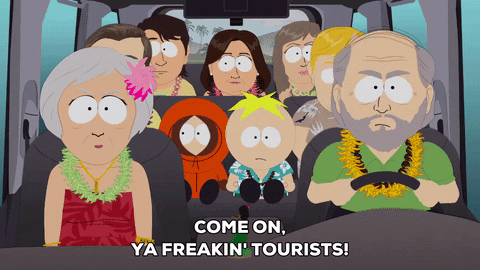
Unit 6: Tourism
For Unit 6, I have decided that the keyword for this section would be tourism. Tourism is defined as the act and process of spending time away from home in pursuit of recreation, relaxation, and pleasure, while making use of the commercial provision of services. Tourism is important to this unit because of the exploitation of other countries/cultures that we have discovered within this unit; which happens to typically be the basis of tourism. Aren Azuira, author of “The Romance of the Amazing Scalpel: ‘Race’, Labor, and Affect in Thai Gender Reassignment Clinics”, not only addresses the gender reassignment practices in Thailand, but also the exploitative tactics to glorify the “exotic transformation”. She explains, “over the past ten years it has transformed into a niche medical-tourism market targeted to well-off citizens of affluent nations. Yet the fact that gender reassignment surgery is big business in Thailand does not account for why, in a clinic that is reputed to provide the best care and clearly has the capacity to do so, Som felt that the staff cared more about foreigners than Thai’s,” (Azuira). Reassignment surgery in Thailand strengthens the Thai market which caters to tourists (or non-thai’s); it is known as the “ultimate place for space of exotic transformation and the fulfilment of desire across multiple sites”, (Azuira). Thai clinics are huge in the tourism industry; while tending to the hospitable needs of transition people, they also are exploitative of the culture with no benefit to it.
An example of tourism would be tourists being attracted to the beach and luxuries of a prominent island, but completely neglect the impoverished communities that actually live there.
Cite: Aizura, Aren Z. “The Romance of the Amazing Scalpel.” Queer Bangkok, 2011, pp. 143–162., doi:10.5790/hongkong/9789888083046.003.0008.
1 note
·
View note
Photo
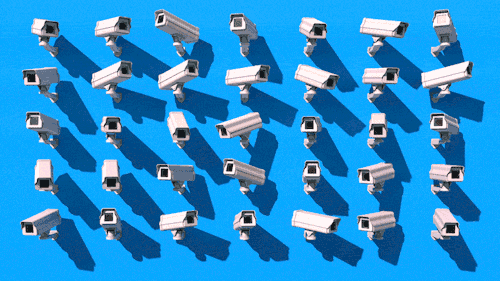

Unit 4: Surveillance
For Unit 4, I have selected the keyword for this section to be surveillance. Surveillance is defined by Oxford dictionary as close observation, especially of a suspected spy or criminal. The ironic part about surveillance is that in most cases it is unknown what the data of what is observed is being used for, which causes an alarming impact on labor. Madison Van Oort, author of “The Emotional Labor of Surveillance: Digital Control in Fast Fashion Retail”, discusses the root in the high need for surveillance in general populations. She says, “Feminist surveillance studies is a useful framework for pursuing such an agenda since it fore-grounds ‘implications of surveillance for disenfranchised bodies. In this view, surveillance technologies are not neutral or objective, but rather emerge out of and reinforce historic inequalities… ‘Rather than rehashing arguments as to whether or not surveillance keeps the United States safe, [feminist surveillance studies] instead take[s] an intersectional critical feminist approach to illuminate what constitutes surveillance, who is scrutinized, why, and at what cost’,” (Oort). Surveillance may appear to be in rational intention to form as some sort of security, however, inequalities become more prevalent when people are put under surveillance and scrutinized.
Since Oorts article mainly focuses on the surveillance in the retail environment, a common example of the invasion of surveillance would take place in retail stores. For instance, an African American employee is manding the cash register at a certain time of the day and there are two cameras from two separate angles pointed directly at the employee. Based on the employee’s demographics, anytime there is a shortage of cash (no matter how small), the first person being inspected is the African American employee. This shows that in retail stores, inequalities (aside from invasion of privacy) become heightened at the extent of excessive surveilling.
Cite: Oort, Madison Van. “The Emotional Labor of Surveillance: Evidence from the Fast Fashion Retail Industry.” 2018, doi:10.31235/osf.io/sqzr6.
Unit 5: Modern Slavery
For Unit 5, I decided that my keyword for this section is modern slavery. Modern slavery is defined as institutional slavery that continues to occur in present-day society. Modern slavery typically affects ones who are exploited, paid unfairly and endure hard labor in order to achieve their own perception of a “better life” or just to be financially stable (and sometimes even that doesn’t happen). It is important to identify modern slavery because it is commonly inferred that slavery is a thing of the past when it is just as prevalent now as it was then. Hannah Lewis et. al, author of “Hyper-precarious lives: Migrants, Work and Forced Labor in the Global North”, goes in-depth about the reality of modern slavery and its effects on migrant workers. It is stated in the article, “Certain migrants more susceptible to exploitation in unfree labor at particular times. These factors compromised socio-legal status, lack of knowledge of rights, lack of access to information, isolation from society, multiple dependence on the employer, loss of or changes in employment, and debt accrued in migration – contributing to movement along a continuum of unfreedom towards forced labor…Migrant workers’ subjection to these types of extreme forms of labor exploitation and insecurity connects with ‘modern slavery’,” (Lewis et. al.). Modern slavery is more than just forced labor, but it also affects the whole trajectory of migrant workers' lives. They work endlessly for their livelihood and suffer unfair treatment in many spectrums.
An example of modern slavery would be workers in the Third World countries working for major companies, such as sweatshops in India supplying product for Nike to sell. The compensation for the extensive work they do shockingly keeps them in the line of poverty and creates massive oppression around these workers and their families.
Cite: Lewis, Hannah, et al. “Hyper-Precarious Lives.” Progress in Human Geography, vol. 39, no. 5, 2014, pp. 580–600., doi:10.1177/0309132514548303.
0 notes
Photo
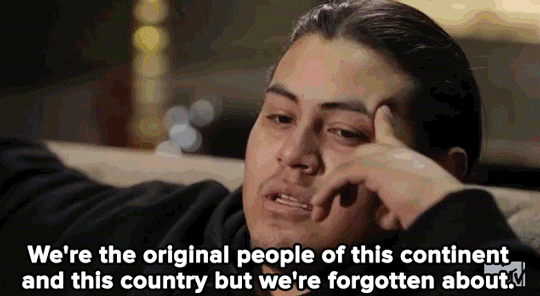
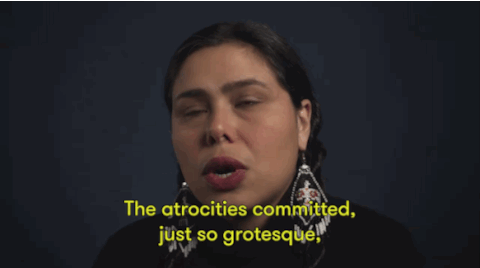
Unit 3: Colonization
For Unit 3, I’ve decided that the keyword for this section is colonization. Colonization is defined as the action of appropriating a place or domain for one's own use; taking complete control over an indigenous area and its inhabitants. A more common example of colonization would be the foundation or beginning of the United States as a country. Typically taught in schools, Christopher Columbus “founded” America while discovering “natives” inhabiting the land. The reality of this narrative is that Christopher Columbus couldn’t have founded land that was already found. The harsher reality is that indigenous people who suffer from colonization (typically by an oppressive group; white men) undergo major trauma, ethnic cleansing and cruel punishment (something that is not often taught in schools). Author of “Possessive Investment: Indian Removals and the Affective Entitlements of Whiteness”, Alyosha Goldstein (as read in class), explains the negligence of indigenous people in the United States. She states, “Whiteness in the United States has been historically constituted not only as a form of property but also as the capacity to possess. This capacity to possess has been invested partly through ownership claims to land and people—the proprietary relations of settler colonialism and chattel slavery—and the consequent dispossession that such claims entail” (Goldstein). True American history becomes erased underneath colonization especially when it involves the dismantlement of an entire culture/group of people.
Cite: Goldstein, Alyosha. “Possessive Investment: Indian Removals and the Affective Entitlements of Whiteness.” American Quarterly, vol. 66, no. 4, 2014, pp. 1077–1084., doi:10.1353/aq.2014.0075.
0 notes
Photo


Unit 2: “The Girl Effect”
For Unit 2, I’ve decided that the key phrase for this section is “The Girl Effect”. The Girl Effect is, defined by author Heather Switzer, “the Nike Foundation’s flagship global corporate social engagement campaign centered on the rescue and recuperation of adolescent girls in the global south…it focuses on ‘the unique potential of 600 million adolescent girls to end poverty for themselves and the world’” (Switzer). The thing I find most interesting about the Girl Effect is how a global campaign can target young girls in poverty and assume the solution to that is an education. Switzer goes in-depth with this idea by stating, “Promoting institutional access to formal schooling for adolescent girls as a means for economic development serves neoliberal aims to predict female productive and reproductive capacity by managing adolescent bodies and thereby reifying post-feminist female exceptionalism as the singular ‘solution’ to global poverty” (Switzer). The Girl Effect campaign has been nothing short of condescending and unethical with their message. The Girl Effect completely stereotypes the global south girl, uses her body as a part of economic development, and completely sets limitations based on Westernized standards for women, all while their aim is to plan for “future generations”. I believe it is important to consider the key phase The Girl Effect because of its the hegemonic discourse of seemingly “beneficial” thinking to “help” the global south girl from poverty; when in fact, it does not help her but assumes her pathways in life, based on Westernized ideals.
An example of The Girl Effect would be pitting two global south girls in poverty up against each other and distinguishing their success in life based on certain factors. Like the original Girl Effect campaign video viewed in class, if girl A does not have schooling in her plans she will get pregnant at 15, become a sex worker at 16 (just to make a living) and contract HIV along with unplanned pregnancies. On the other hand, girl B chose to go to school and once she graduated she is making 6 figures, fell in love, started a family and was able to supply for the next generation. The craziest thing about this to me is that these organizations sell the dream that education saves you from poverty and constricts girls to two ridiculous paths (as if their life is already predestined).
Cite:
Switzer, Heather. “(Post)Feminist Development Fables: The Girl Effect and the Production of Sexual Subjects.” Feminist Theory, vol. 14, no. 3, 2013, pp. 345–360., doi:10.1177/1464700113499855.
0 notes
Photo

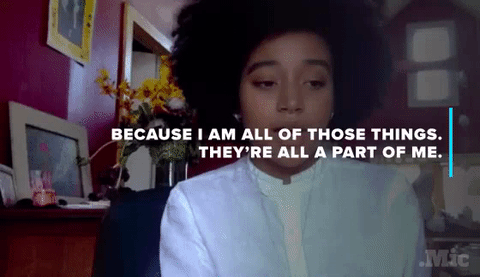
Unit 1: Intersectionality
For Unit 1, I’ve decided that the keyword for this unit is intersectionality. I chose the word “intersectionality” for this unit because of its significance for the strive for equality for all. We, as people, should understand that we are not limited to one social identity, but are made up of many. When it comes to these differences within our identities, in society, they can become barriers for certain people. From this unit, Audre Lorde (author of Age, Race, Class and Sex: Women Redefining Difference) gives an indirect definition of intersectionality that accurately describes society. Lorde states, “Certainly there are very real differences between us…But it is not those differences between us that are separating us. It is rather our refusal to recognize those differences, and to examine the distortions which result from our misnaming them and their effects upon human behavior and expectation.” Intersectional differences shouldn’t divide us, but we should understand that everyone’s experiences in society vary based on said differences.
An example of intersectionality today would be the gender pay gap. Generally, women make 72 cents to every man’s dollar, however, that pay differs on the racial background of the woman. While the white man makes a dollar, the white woman makes 77 cents, the Black woman makes 64 cents and the Hispanic woman makes 54 cents. Race plays a small part in a person’s intersectional identity but can have a major effect on one’s experiences in life. It is important to pay attention to the experiences of marginalized groups through intersectionality, to correct collective biases and obstacles to ensure an equal playing field.
Cite:
Lorde, Audre. “Age, Race, Class and Sex: Women Redefining Difference,” in Sister Outsider: Essays and Speeches (Freedom, CA: Crossing Press, 1984), pp. 114-123.
1 note
·
View note